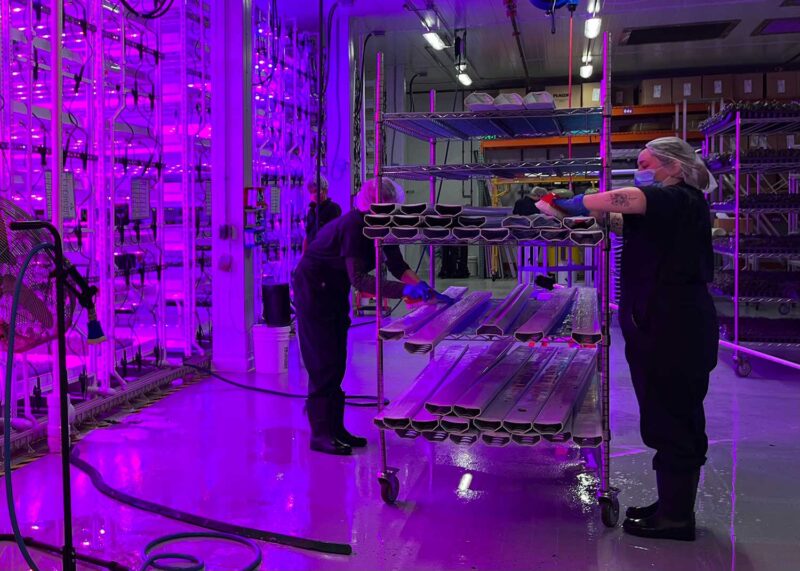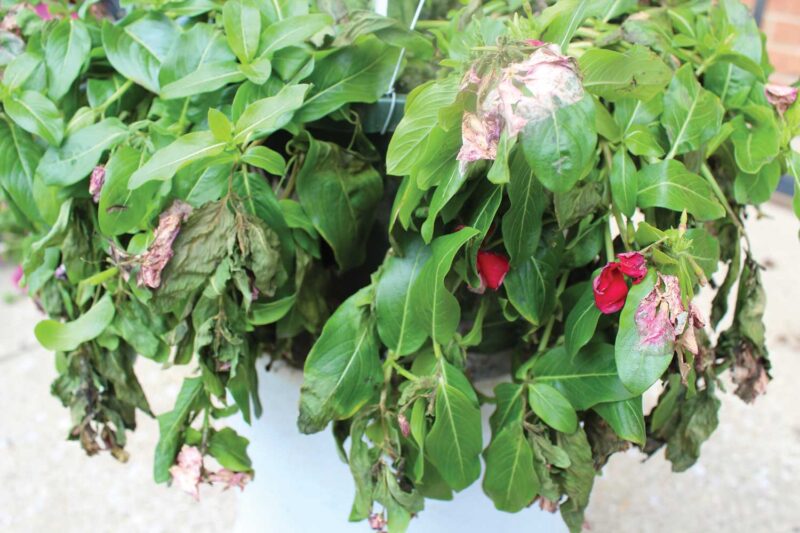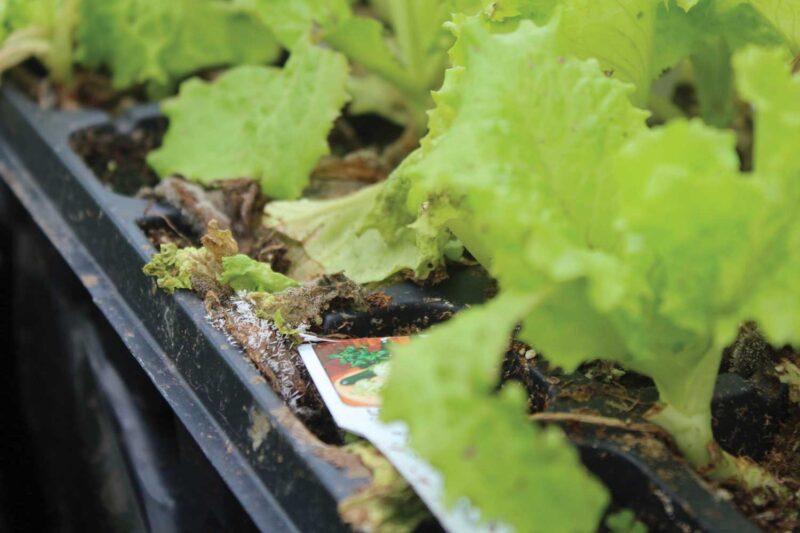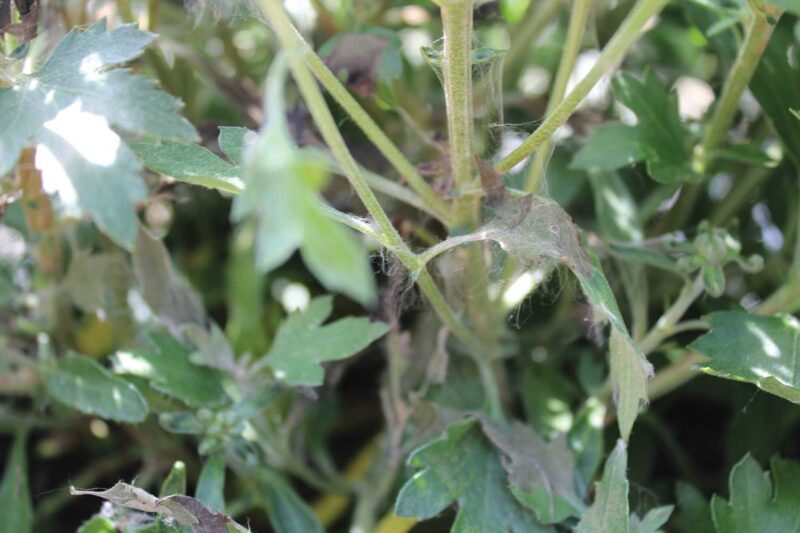
Savvy sanitation protocols for the greenhouse
Intensive greenhouse cleaning is certainly not the most glamorous job and might be the last thing that people want to do after a busy season. But, a sanitation program can do wonders in the greenhouse and it is important for getting the next crop off to the right start.
Growers should always be sanitizing as they move along, but a break between crop cycles or after a busy spring season is the perfect time to start fresh for fall mums.
Heidi Lindberg, greenhouse and nursery extension educator at Michigan State University Extension, noted that when the greenhouse is between crop cycles, it is especially important to sanitize the greenhouse to reduce the risk for pathogens or pests.
“The first step is to remove organic material — leaf litter, spent blooms, weeds or old plants,” she said. “Then, growers should clean all the surfaces with a pressure washer on low with a detergent and water. Lastly, growers should apply a disinfectant to the surfaces.”
From there, Lindberg added that growers should implement even more stringent protocols such as changing out weed mats if there was a disease outbreak in the prior season.
Nicole Gauthier, Extension specialist in plant pathology at the University of Kentucky, focuses on specialty crops, which includes fruits, vegetables, ornamentals and hemp.
“Just like in hospitals or in our houses, we need to keep our greenhouses clean so that we’re not spreading microbes that cause disease,” she said. “We want to prevent the movement of pathogens and propagules.”

For basic cleaning, she noted things such as washing pots, removing debris and not moving dirty water from block to block are important. She recommends starting with simple cleaning using water and soap and then going into sanitizing or disinfecting.
Gretel Adams, co-owner and operations orchestrator of Sunny Meadows Flower Farm in Columbus, Ohio, said while crops are growing, the team keeps weeds out so they don’t harbor disease.
“We rip out or till in a crop when it is finished, making sure to remove any weeds in the bed as well,” she said. “Then in the winter, we steam our soil, which is more of an advanced grower technique, but helped us with disease buildup in the soil from years of using the same ground beds. Afterwards, we add beneficial bacteria back to the soil with either TerraGrow or RootShield.”
CHEMICALS AND CLEANING AGENTS
There are various choices of sanitizing agents including ethanol, bleach, quaternary ammonium, hydrogen dioxide and chlorine dioxide.
“Bleach is highly effective against fungi, bacteria and some viruses, but it is highly corrosive and needs to be rinsed,” Lindberg said. “Quaternary ammonia products are more effective and not as corrosive, so it can be applied to more surfaces, and has a lower application time. Many growers I talk to use KleenGrow (quaternary ammonia) to clean greenhouses and sulphuric acid products such as Strip-It (sulfuric acid solution) to shock irrigation lines and reduce mineral buildup and biofilm.”
Gauthier noted the quaternary ammonia compounds are highly effective against bacteria, fungi, viruses, as well as algae. “You can use them on walls, floors and tables; you can use them to clean containers and tools; to run through your irrigation lines; and even on the cooling pads in the greenhouse,” she said.
“You wouldn’t use them on anything porous like wood, because they are not as effective.”
Sunny Meadows Flower Farm sanitizes the houses once a year by spraying the plastic, wood and black woven landscape fabric they have around the edges with Sanidate 5.0 if there are no plants in the bed, or Oxidate 5.0 if there are plants near.
“They are both a hydrogen peroxide-based solution, so [products] require a specific sprayer or injector as the peracetic acid can eat away at the o-rings,” Adams said. “Sanidate cannot touch plant material, so if the house has anything in it that was fall planted for spring bloom, you must use Oxidate instead.”
Growers should always read the label to check for a product’s effectiveness on certain surfaces.

EQUIPMENT MATTERS
While many growers use fairly simple equipment such as pressure washers, brushes and brooms to clean between crop cycles, edible crop greenhouses tend to have more rigid sanitation protocols than ornamental crop growers due to biosecurity and utilize sprayers, foggers and UV-C lights.
Sunny Meadows Flower Farm utilizes a Dosatron injector, with Adams noting it can handle the peracetic acid, while a backpack sprayer is used for smaller applications.
Gauthier said power washing should be used to do away with algae, but success is less about the equipment one uses and more about simply sticking to a regular program.
“When I see a broken link in someone’s sanitation program, it’s usually because there’s this all-or-nothing approach,” she said. “A hose and soap and a spray down with a sanitizer is an excellent place to start.”
TIPS FOR SUCCESS
One of the benefits of maintaining a proper sanitation program is growers can expect better plant health and increased yield. Additionally, since insects, diseases and viruses live on discarded plant material, weeds and on dirty surfaces, growers should expect less pest problems in the next crop if the greenhouses are cleaned and sanitized prior to a new crop.
For those looking to improve sanitation in the greenhouse, Lindberg recommends trying to be as thorough as possible and consider high-touch surfaces and frequently-used equipment as well.
“For example, conveyor belts, irrigation emitters, scissor or mobility carts, environmental control systems and handheld tools are especially important,” she said.

At Sunny Meadows Flower Farm, the team also dips the flats in Greenshield between uses or Sanidate to wash buckets.
“Be sure to keep all dying plant material out of the greenhouse,” Adams said. “We do not strip the leaves off of flowers we are harvesting in the greenhouse; the processing happens in the barn to keep the walkways clean. Weekly, we walk through the beds to scout and to remove any dead plants. We also label spots where there are hot spots for disease because you can sometimes treat one area instead of the whole bed.”
Sanitation should be done between crops, and Gauthier stressed you should never move any tools or piece of equipment between houses or between crops without sanitizing or cleaning — this means pruners, towels and everything that goes into the operation.
“If your boots-on-the-ground team understands why you are doing this and eliminates shortcuts, sanitation becomes easier,” she said. “By doing all this, you’re preventing disease and plant pathogens, and even though you might not see a direct [link to] plant health every time, it’s the prevention where you are saving and making a difference.”









 Video Library
Video Library 


















